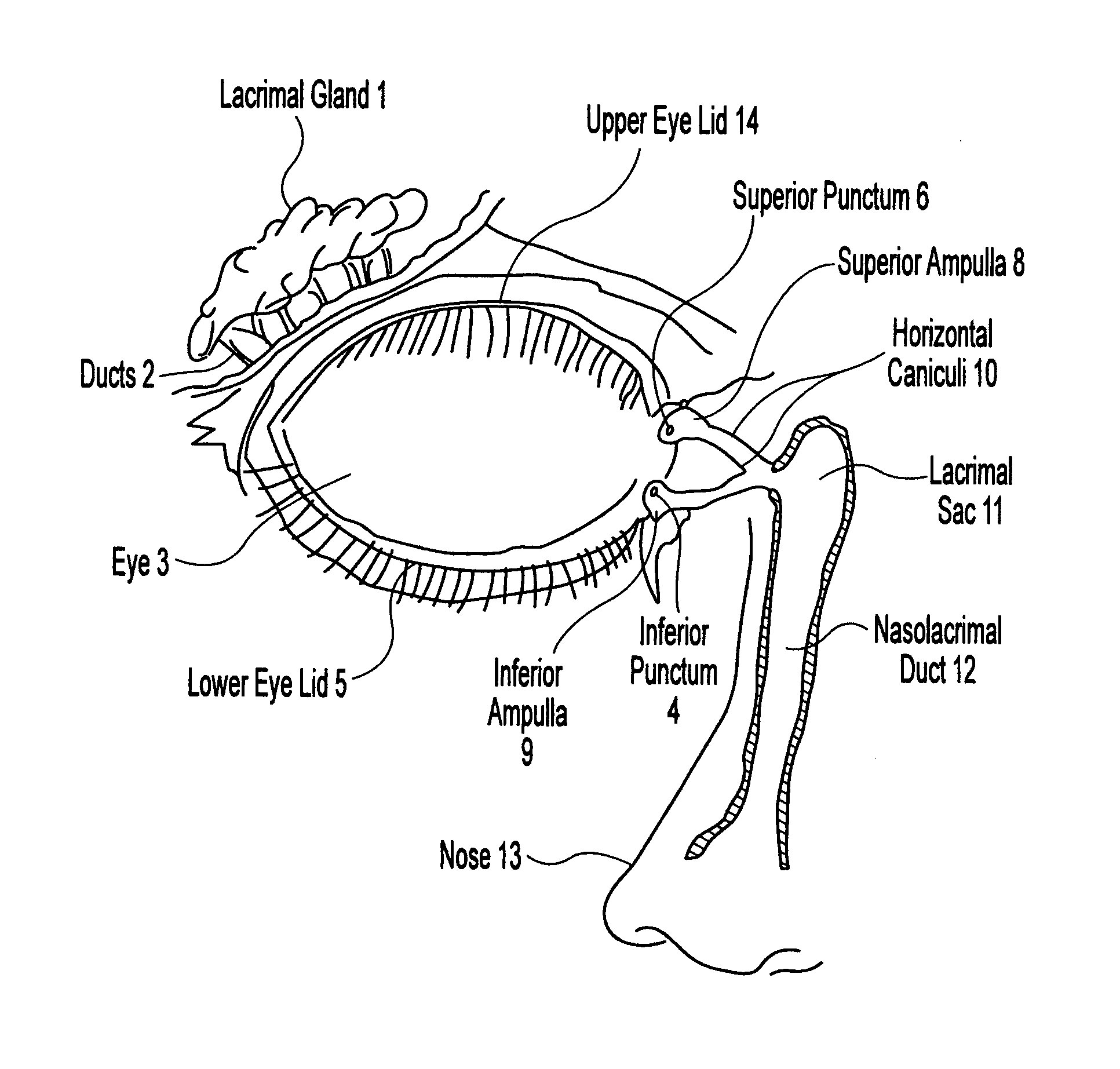Method for preventing nasolacrimal duct obstruction
a nasolacrimal duct and duct blockage technology, applied in the field of tissue radiation injury prevention, can solve the problems of significant recovery time, blockage of the lacrimal duct and the nasolacrimal sac, and release of salivary fluids, and achieve the effect of preventing nasolacrimal duct blockage (nldo)
- Summary
- Abstract
- Description
- Claims
- Application Information
AI Technical Summary
Benefits of technology
Problems solved by technology
Method used
Image
Examples
Embodiment Construction
[0018]The invention is directed to a method for preventing nasolacrimal duct obstruction (NLDO) in a patient receiving radioactive iodine and especially high dose radioactive iodine for treatment of cancer which comprises administering to each eye of said patient an effective amount of perchlorate anion.
[0019]A further embodiment of the invention is directed to a method for preventing nasolacrimal duct obstruction (NLDO) in a patient receiving high dose radioactive iodine (I131) treatment for thyroid, head and neck and breast cancer which comprises administering to each eye of said patient an effective amount of perchlorate anion, wherein the patient is pre-treated with perchlorate anion for a period of from about 3 to about 5 days prior to initiation of high dose I131 therapy, wherein treatment with perchlorate anion continues for as long as the patient receives high dose radiation therapy, and wherein treatment with perchlorate anion is continued for from about 3 to about 5 days a...
PUM
 Login to View More
Login to View More Abstract
Description
Claims
Application Information
 Login to View More
Login to View More - R&D
- Intellectual Property
- Life Sciences
- Materials
- Tech Scout
- Unparalleled Data Quality
- Higher Quality Content
- 60% Fewer Hallucinations
Browse by: Latest US Patents, China's latest patents, Technical Efficacy Thesaurus, Application Domain, Technology Topic, Popular Technical Reports.
© 2025 PatSnap. All rights reserved.Legal|Privacy policy|Modern Slavery Act Transparency Statement|Sitemap|About US| Contact US: help@patsnap.com

